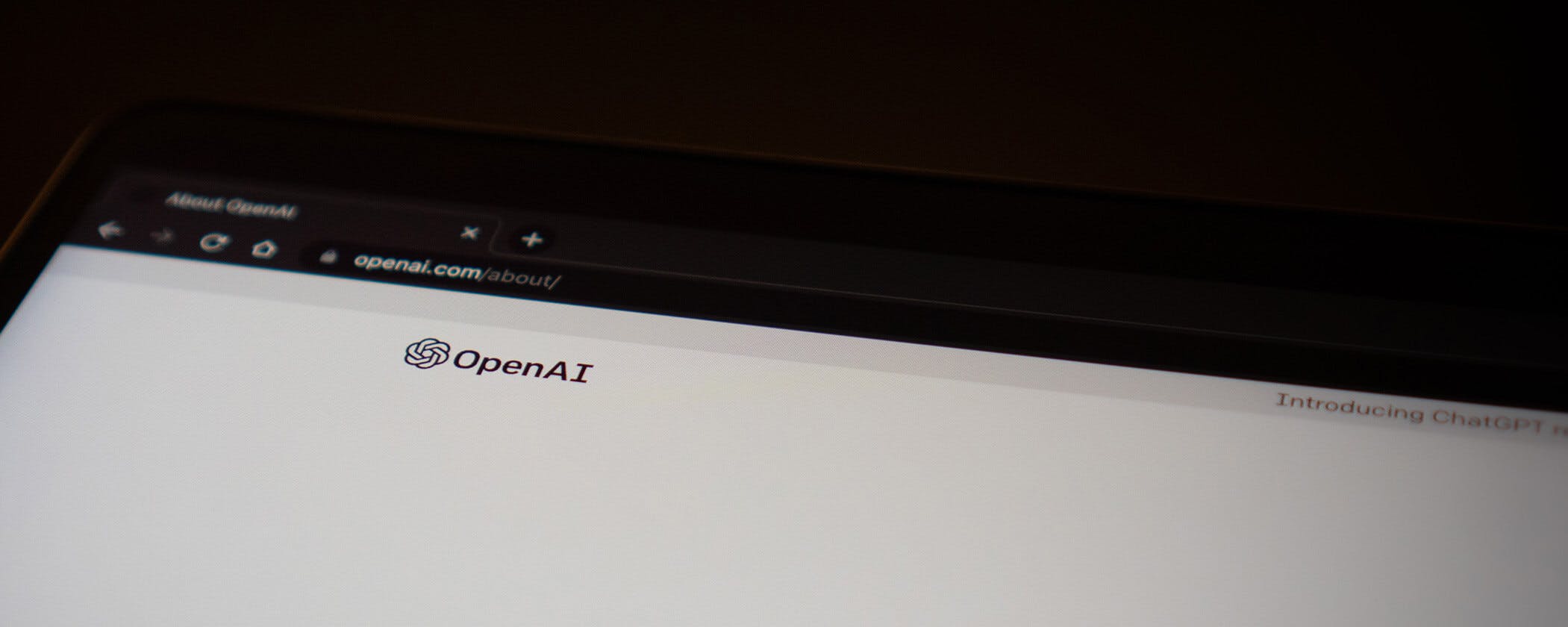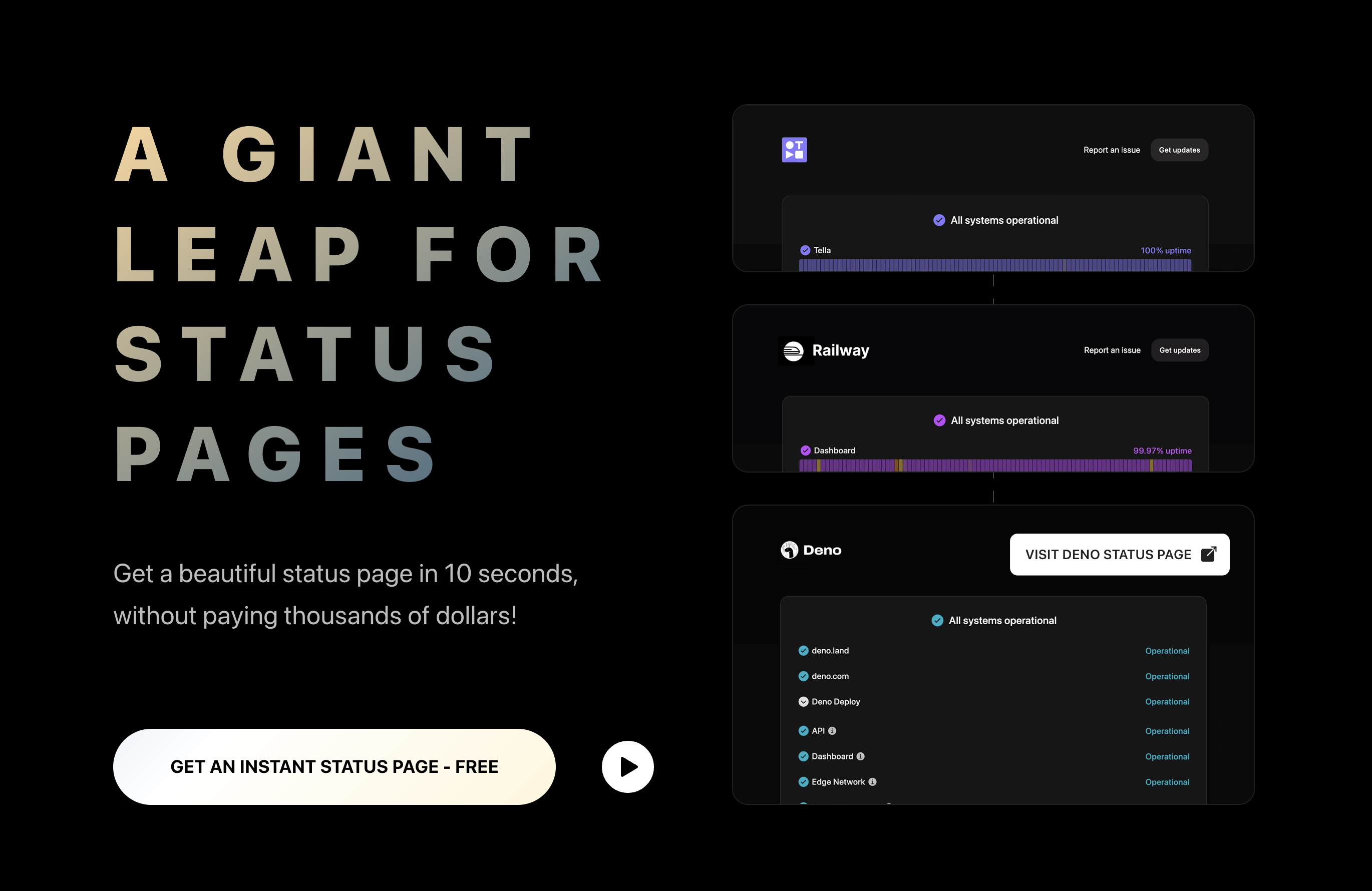How to Improve Your DevOps With ChatGPT?

A large part of SaaS management is communicating with customers. DevOps teams already have so much to do, which is why businesses often automate their customer communication with AI chatbots. These virtual assistants take care of many mundane tasks for you, like answering common questions and detecting user issues.
Whilst you can create a chatbot from scratch, it’s much quicker to use an existing model like ChatGPT.
After all, DevOps is all about utilizing the best tools and practices to increase your efficiency.
You can even reduce customer tickets with your own status page from Instatus, and share incidents with customers before they can ask about them.
Want to learn more about ChatGPT? Read on.
What is ChatGPT?
ChatGPT is a free AI chatbot created by OpenAI. It’s been designed to produce human-like dialogue in a conversational tone and improves based on human feedback. With a machine-learning algorithm, it continuously elevates its dialogue and how it answers customer queries.
ChatGPT works great as an AI virtual assistant for SaaS companies. It can take care of various tasks, including:
- Responding to questions (and follow-up questions)
- Generating written content
- Detecting issues
- Running diagnostics
- Rejecting improper requests
Why use ChatGPT for DevOps?
Help Streamline Operations and Improve Team Efficiency
ChatGPT takes on a lot of mundane activities for your DevOps team, which frees them up for more complicated tasks. Automating your customer management increases your efficiency and allows you to get a lot more done.
Chatbots handle many common customer questions and complaints, and even help troubleshoot those issues to save you the trouble.
Common problems can include:
- Connection issues
- Login errors
- Struggles with using a feature
Knowledge Sharing Center
ChatGPT gives you and your customers a quick way to access all sorts of information. It can scour the internet for answers or pull from your internal systems. With such a convenient knowledge hub, you won’t have to waste time manually searching for information when working to improve your DevOps strategies.
It also allows you to share knowledge between different parties, even if they work in different locations. This makes collaboration and issue resolution much more seamless.
Chat to Scale up Systems/ChatOps
ChatGPT automates a large part of your customer communication along with other routine tasks, such as update configurations or setting up new servers. Scaling your systems no longer falls entirely on your DevOps team, reducing their workload and increasing your ability to scale up. These automation tools are a great way to ensure you keep up with customer demands.
How to use ChatGPT for DevOps?
ChatGPT is one of many free tools that allow you to elevate your DevOps activities. Another great example is Instatus, which lets you set up your own status page in just 10 seconds. Customize the page to suit your brand using our range of templates, and use it to keep a constant eye on your software performance. You can also showcase your uptime history to build a sense of trust, and add in a maintenance schedule to let customers know when your systems are due to be down.
Any team member can update the status page, and you can notify all customers about these updates via SMS, email, Slack, and more at no extra cost. Instatus supports multiple languages, so you’re able to accommodate a wider customer base.
Define Your use Case
Firstly, you must determine how you would like to use ChatGPT. What purpose do you want it to serve? What tasks do you want it to automate? ChatGPT is primarily a conversational AI assistant, so it’s ideal for incident management. However, it can also serve the following purposes:
- Deployment automation
- Infrastructure management
- Compliance management
ChatGPT minimizes the need for human interference, so try to choose tasks that are fairly simple to execute and require daily maintenance. The AI chatbot can be used for multiple purposes, so don’t feel too pressured to choose just one.
Choose Your Platform
Next, decide which platform you wish to use ChatGPT for. Do you have a specific software or website of yours in mind? You can also look into other platforms that interact with ChatGPT to see if they benefit your chosen use cases. Here are some examples:
- Transformers (Hugging Face)
- GPT-3 Playground (OpenAI)
- Azure OpenAI Service (Microsoft)
Integrate ChatGPT
Now it’s time to actually integrate ChatGPT with your software and train its algorithm to suit your use case. When training the AI, it really depends on what your purpose is and what response you’re hoping to get. How specific must the responses be? What questions should it be able to answer? You can teach your AI many things, but we’ll be focusing on these main three:
- Answering questions
- Problem-solving
- Generating code or content
As a starting point, here are some examples of techniques you can use to teach your ChatGPT:
Ask Different Types of Questions
Ask multiple types of questions to see how the responses differ for each question. This gives you a quick overview of which questions it answers well and which need improving. Train it to give the answers you want and make sure they’re easy to read and understand
Have Lengthy Conversations
Ask follow-up questions to extend conversions and prompt it to learn about different topics. This also tests the AI’s capability to carry on a conversation and whether it can recall previous information. Try asking questions like you would a search engine to train ChatGPT for research purposes
Include Examples in Your Prompts
Include specific examples in your prompt to generate more detailed answers. You can use this method to teach certain phrases. Try giving the AI a complex problem to solve, such as “how do I solve X problem” or “give me 5 solutions to X problem”.
Make sure to check the validity of their answers to see how well they respond to complicated queries.
Here are some more examples of prompts you can give:
- Explain how X functions and how to integrate it with X.
- What is the best tool for solving the X problem?
- Give me 5 ways to automate X tasks without exceeding X budget.
Generating Scripts & Troubleshooting
You can prompt ChatGPT to generate small scripts and train it to manage certain configurations. The AI can also be taught to troubleshoot common problems using information from the web. Practice asking it for help when issues arise to train its responses.
Here are some example prompts:
- Generate a script for X task.
- Solve X issue and update this code.
- Explain X issue and how you fixed it.
Train Using a Specific Data set
Teach the chatbot to access certain data sets so it can pull information from them when answering certain queries. This gives ChatGPT more context when it comes to solving problems and understanding your DevOps workflow.
Practice Integrating it With Other Tools
Test how well ChatGPT integrates with your DevOps tools and techniques. It should keep your workflow running smoothly without compromising any activities. ChatGPT especially benefits from integrating with communication software, like Microsoft Teams or Slack, so it can provide real-time support
Test and Refine
Now that you’ve started training ChatGPT’s algorithm, you should continue testing it in real scenarios and refine it based on the results. Test it with your DevOps team and use it in customer service as a help desk. The more feedback it gets, the more its algorithm can improve.
ChatGPT can take over FAQs and give advice to your customers whilst they’re on your site, making it easier for them to make conversions. You should also practice utilizing the bot in everyday tasks to test its efficiency. Is it more of a hindrance than a help? If so, what exactly is the problem, and how can you fix it?
Remember to regularly monitor the chatbot’s responses so you’re quickly notified whenever it makes a mistake. It’s important always to give yourself a way to override the bot with human interference in case something goes wrong.
There are a few things you should look out for:
- Inaccurate replies
- Outdated information
- Inappropriate comments
- Irrelevant responses
- Incomprehensible answers
Monitor and Maintain
Keep an eye on your chatbot and how its algorithm changes as it receives more and more feedback. Never become too reliant on the AI to the point where you stop doubting its answers.
You should always be aware it could make mistakes at any point and be ready to do maintenance on it. It helps to periodically retrain the AI and update its APIs to avoid major issues from occurring.
Conclusion
DevOps teams are often tasked with many different activities, so AI chatbots like ChatGPT are a big help. Whilst primarily a conversational bot, it can also automate tasks like incident management, which frees up your team more complex activities.
ChatGPT alone serves many purposes, but it still has its limitations.
That’s why it’s worth investing in tools like Instatus to boost your DevOps and customer communication further. With Instatus, you can create a beautiful status page to keep customers informed about server outages.
Start for free today to get your status page up and running in just 10 seconds.
Get ready for downtime
Monitor your services
Fix incidents with your team
Share your status with customers


